- Home
- Ramachandra Guha
The Picador Book of Cricket Page 2
The Picador Book of Cricket Read online
Page 2
The All-England XI had many adventures and many successes. F. S. Ashley-Cooper worked out that in the seven years 1847–53 Clarke himself took 2,385 wickets for them, an average of 340 per season. A booklet was published, for the benefit of local cricketers, entitled How to Play Clarke. He did not like taking himself off, and of course he had plenty of batsmen to bowl at, but it is still a lot of wickets. Batting twenty-two may not have made much difference to the scores of the local side, but it did make a difference to the England batsmen. Imagine the difficulty of scoring runs, against any sort of bowling, with twenty-two men in the field, especially when everything has to be run out, and with the crowd on the side of the fieldsmen, eager to return the ball (quite the opposite when their own side was batting). The grounds were often small, the pitches almost inevitably rough. In 1855, for instance, Caffyn averaged 22 in eleven-a-side matches, which would usually be played on better grounds, but only 16 for the whole season. In the same season John Wisden took 223 wickets in all matches at an average of 5, and averaged 23 with the bat, and it was the second figure that was considered more remarkable.
It was Wisden, with Jemmy Dean (two Sussex men), who founded the United England XI in 1852. Old Clarke was a bit of an autocrat, and was reputed to be making money out of all proportion to the £4 a match (which usually lasted three days) which he paid his players. In any case, now that the career of a travelling cricket professional had been shown to be feasible (it could not have been done without the railway), more good players were coming forward than one eleven could accommodate. The matches between the All-England and United XIs became the most important matches of the season, more so even than North v. South, much more so than Gentlemen v. Players – for this development of professional strength was too much for the amateurs, who between 1850 and 1865 lost every match but one. The England–United match first took place in 1857. Clarke, so long as he was in charge, would have nothing to do with it, and of course from his own point of view he was right, because the unique status of his side had gone. It is reported that 10,000 people at a time would attend these matches, which were sometimes played for the Cricketers’ Friendly Fund (‘after deducting all expenses’, Caffyn says, a somewhat uncertain qualification). These two great elevens, which had a number of less successful imitators, undoubtedly did the game of cricket service, spreading it all over the British Isles. The wide interest they created proved to be, as county clubs emerged, their own undoing. But they lasted a long time, and no discussion of English cricket captains should omit the name of crusty old Clarke.
Nor should it omit that of George Parr. The formula which had worked so well for the professionals at home might surely be tried out abroad, and so it was that a representative team left Liverpool for North America in 1859. Six players were from the All-England XI, and six from the United. Fred Lillywhite accompanied them as scorer, reporter and mentor, not to say Nestor. George Parr of Nottinghamshire was the captain. There were two other Nottinghamshire players, three from Cambridgeshire, two from Sussex, and four from Surrey. Wherever it went, the party was distinguished by Fred Lillywhite’s portable scoring-booth and printing-press. The team were photographed before they started, against a suitable background of rigging (not actually on the ship they sailed on), in spotted shirts and striking attitudes. They had a rough passage, and Parr, a bad traveller, had consumed large quantities of gin-and-water before they arrived at Quebec.
Cricket was very popular then in the United States and Canada. At New York, ‘ten thousand people’ (though one must always mistrust such conveniently rounded figures) watched the match, all the ground could hold. The band played ‘Rule, Britannia!’ as the English began their innings. This was only forty-five years after the Second American War, and only three years before the Alabama sailed from Liverpool, nearly producing a third. At Philadelphia the crowds were even larger.
All the matches were played against odds, and if the match ended early, as often it did, the Englishmen would divide forces and play an eleven-a-side match, sharing the locals. In one of these additional matches, Parr was badly hit on the elbow by Jackson, the dreaded English fast bowler, and was unable to bat again during the tour. He did, however, make a public appearance in the last match, against a Combined Twenty-Two of Canada and the United States, when he volunteered to umpire. It was now the second half of October, and bitterly cold, and it has to be said that soon the umpire/captain abandoned his duties, retiring to the comforts of hot gin-and-water in the pavilion. His colleagues fielded in overcoats and gloves. On the second day there was no play because of snow, but the teams played a match at baseball instead.
In spite of the formidable travelling, and the fearful difficulties in transporting Lillywhite’s scoring-booth, Parr’s team won all its matches. They made themselves very popular, saw the Niagara Falls, and took home a profit of £90 a head. They had an even rougher passage back, and one of them, Jemmy Grundy, had a misunderstanding with the Customs over a box of cigars.
Parr had succeeded Clarke as the captain of the All-England XI, and was reckoned the champion of batsmen between Fuller Pilch and Richard Daft. He came to be called ‘The Lion of the North’, and he was a fine, courageous player, especially strong on the leg side. ‘George Parr’s tree’ at Trent Bridge used to mark the spot where his favourite leg hits went, and when he died, in 1891, a branch from it was placed among the wreaths upon his grave at Radcliffe-on-Trent, his lifelong home. He was a nervous and choleric man, but popular with his teams. He had bright blue eyes, ginger hair, mutton-chop whiskers with moustache (or without either, according to his mood), and was not much good at administration and not very patient with those who had to do it. I would guess that he was the kind of man who, in any period, would turn out to be a captain of England at something or other.
Two years later, in 1861, the first English team went to Australia. It would probably have gone to North America, had it not been for the outbreak of the American Civil War, which among rather more important consequences set back American cricket severely. This was not, as English standards then went, a very good side. The ‘northern players’ were unhappy about the terms offered by the sponsors, the Melbourne caterers Spiers & Pond. These were £150 a head, plus – that word which could mean so much then, as now – ‘expenses’. ‘The northern players’ meant, in effect, Parr and his Nottinghamshire men. They refused to go. The team was raised principally through the efforts of Surrey, whose secretary came to an amiable arrangement with the representative of Spiers & Pond. There were seven Surrey players in the twelve. Two Yorkshiremen, Iddison and Ned Stephenson, were enlisted – they would hardly at that stage of their careers have been first choices – and added much to the joviality of the tour, as well as its success. One cannot say quite so much, especially respecting the first part, of all the Yorkshiremen who have toured Australia since. Iddison wrote back home: ‘We are made a great fuss of; the Queen herself could not have been treated better.’ Ned made the witty remark, as they travelled through the Red Sea, that it looked no redder than any of the others he had seen, and stuffed a towel into the trombone of the cook at the ship’s concert. Roaring Yorkshire stuff.
But it was Surrey’s tour, essentially, and a Surrey man, H. H. Stephenson, was captain. They won 6 and lost 2 matches out of 12, all against odds. Stephenson, the captain, had much success as an after-dinner speaker, an accomplishment which many other captains had to learn, often painfully. Large crowds attended them. Stephenson was a notable cricketer, chiefly for his bowling, and his fast break-back (the arm had of course been getting above the shoulder by now, though an overarm delivery was not legalized until 1864). He was also a powerful hitter and probably the second-best English wicketkeeper, Lockyer being, it was recognized, the best. He became coach at Uppingham, where he produced many admirable cricketers, and seems, towards the end of his life, to have been the most influential, not to say bossy, man in the school. No doubt a man who had led the first England side in Australia was entitled to be a littl
e authoritative.
In 1863, the American Civil War was still on, never more so, and the second English side to Australia set out, a better and more representative side than the first, Parr captain. Again, all matches were against odds, and England were unbeaten, though they only scrambled home by one wicket, almost at the end of their tour, against Twenty-Two of New South Wales. An amateur went on this tour, the youthful E. M. Grace of Gloucestershire.
Now in 1854 old Clarke had brought the All-England down to Bristol to play against the West Gloucestershire club, on the Downs at Durdham. This was the first important match that W. G. Grace, aged six, remembered watching. In 1855, Clarke brought the side again, though he did not play himself, and was impressed by the play of W. G.’s eldest brother, E. M. E. M. Grace was then thirteen years old. When he was asked to go to Australia, as the result of some extraordinary batting late in the season, he was twenty-one. After watching the boy E. M., Clarke gave him a bat, and gave his mother a copy of a book which bore his name, inscribing it
Presented to MRS. GRACE
By William Clarke,
Secretary All-England XI
The book ultimately came into the possession of W. G. Thus does one England captain edify and encourage another.
There was a lull in tours from England after this. Australia was such a long way away, and America, even when the war there was over, was bothered and restless and thinking of other things. But a lot of cricket was played, increasingly, in various parts of the world. Parr’s second side had been the first from England to visit New Zealand. In the same year, cricket clubs were founded in the Transvaal and in Kingston, Jamaica, and in 1864 there took place the first known match between Madras and Calcutta. They were playing cricket in Valparaiso, and in 1866 came the first Argentinian hat-trick. In 1868 a team of Australian Aborigines visited Britain, and played a lot of cricket among their other entertainments, such as throwing boomerangs, but this, while a pleasing event both at the time and in retrospect, was one of history’s freaks, and led to nothing.
In the same year a second English side went to North America. They drew against Twenty-Two of Canada, and beat Twenty-Two of the United States. Their captain was Edgar Willsher, who had caused such a stir at the Oval in 1862, when playing for ‘England’ against Surrey. He did not trouble to conceal the height at which his arm went over, well above shoulder height, and was no-balled five times running by his old pal John Lillywhite, whereupon he flung down the ball upon the pitch and left the field. The game was resumed the following day, after dropping the umpire, which as any cricketer to this day will tell you, is a plan with a lot to be said for it. Whether Willsher, in this unimportant tour, had any trouble with American umpires, I do not know.
In 1872 there came the third English tour to North America. The captain was R. A. Fitzgerald, although the dominating figure was that of W. G. Grace, now twenty-four and established as England’s leading batsman: indeed, ‘leading’ does not quite fit the case. It was widely thought in England that there had never been a cricketer like him; it is still. But we shall have to deal with him again. Fitzgerald was secretary of the MCC, and all the team were members of MCC, and therefore amateur, so this tour was a departure from precedent, when the professionals had made all the running. Fitzgerald wrote an amusing book about it, Wickets in the West, but I must not dwell upon it, for even with Grace, the absence of professionals made it hopelessly far from an England XI. Not that it did badly, in terms of either results or attendance.
The following winter, 1873–4, Grace took a side to Australia, which played fifteen matches, all against odds, and lost three. They won the most important one, against a combined Fifteen of New South Wales and Victoria. This was a strong team, which included four amateurs besides the captain. It was clear that Australian cricket had made great strides, especially in bowling.
And so we come to the tour of 1876–7. Two tours to Australia were planned that summer. James Lillywhite, Junior – yet another member of that famous cricketing family – was intending to take out a band of professionals, and G. F. Grace one which was to include some amateurs. Grace’s fell through, after many of the preliminary arrangements had been made. Now this was to prove a matter of some importance. To English cricketers, this was just another tour, but Lillywhite’s men were to play two matches against a Combined Australian Eleven, the first time such a thing had happened. As the years went by, and cricketers began to develop their passion for statistics, it became desirable to decide which matches should count in the records as ‘Test matches’, and 1877 was the obvious place to start. But if there had been two touring sides, the status of the eleven-a-side matches would have been demonstrably reduced, and perhaps a different starting point would have been found.
However, Fred Grace did not go, and Lillywhite did, and so the match at Melbourne in 1877 became recognized as ‘the first Test’, and a hundred years later the centenary Test was played on the same ground, with exactly the same result, victory to Australia by 45 runs. From this point I have followed the generally recognized practice as to what was, and was not, a Test match. It leads to some absurdities. For instance, the standard of cricket on some of the early tours, particularly to South Africa, was a long way from a true international standard. I can, again, see no real reason why the 1929–30 England tour to New Zealand (captain, A. H. H. Gilligan) should be counted, and not that of 1935–6 (captain, E. R. T. Holmes). In February 1930, England began two Test matches on the same day, one at Auckland and one at Georgetown. But if you want to have statistics, you must agree on which matches to base them, or everyone would have his own, and it is more convenient to follow the accepted list. It does mean, however, that ‘Test career records’, at least up to the Second World War, are not quite always what they seem.
So they were making history, though they did not know it, the party of twelve professionals who set out in 1876. Let us consider these hardy pioneers a little.
Lillywhite, who was promoter and manager as well as captain, was a Sussex man, from West Hampnett, and thirty-five years old at the time of the first Test. He was a medium-paced left-arm bowler, in the steady, persistent style much admired at the time, and a good enough left-handed batsman to score the occasional century. He had visited Australia with the previous side. In the Tests (England won the second by 4 wickets, thus sharing the honours) he scored only 12 runs, but took 8 wickets, and only Alfred Shaw took as many. They were the only two Tests that Lillywhite played in. Alfred Shaw was vice-captain, and assistant manager. There were two other Sussex men besides the captain, Charlwood and Southerton (though Southerton at the time was playing for Surrey). Jupp and Pooley were Surrey-born, Selby and Shaw from Nottinghamshire. There were five Yorkshiremen: Greenwood, Armitage, Hill, and – two of the great all-rounders – Emmett and Ulyett, Emmett growing old but Ulyett with many Tests in front of him. So the south, the Midlands and the north were all represented. Lillywhite paid them £150 each for the trip, except for Shaw, who was paid £300 because of his extra responsibilities. Lillywhite also paid them travelling expenses, first class. This was an important point. W. G. Grace’s side had caused some unfavourable comment, especially in Australia, because the professionals had travelled second class, and the amateurs first. This even extended to the hotels where they stayed. It was for this reason that Shaw had declined the trip. Now W. G., perhaps unfairly, was said to have cost the Australians a lot of money by his requirements for ‘expenses’: so an all-professional team, with the terms set out, suited both the hosts and the guests well. They knew where they were.
It was beginning to be possible, and the Australians were soon to recognize the possibilities, for a man to be a professional cricketer all the year round: £150 for the winter, with free living, and colonial hospitality, was not so bad, even though the travelling was severe. It was better than a man might do at home as a bricklayer, or a stonemason, or even a publican (half Lillywhite’s team were publicans at some stage of their lives). Such men were letting the
future take care of itself, but nearly all working men had to do that anyway, in those unpensioned days.
Sea travel was becoming safe (as important a fact in the growth of tours as the railway had been to the All-England XI). You could expect to get to Australia on the new P. & O. steamships which came into service in the 1870s, but it would take you a long time: forty-eight days was an average. If you went, first class, by P. & O., you would be comfortable, by the standards of the time. The P. & O. put their first-class cabins on the top deck, surrounding a central dining room, where there were long tables, with benches which could face either way, because you could switch their backs, and look at the table or the sea as you chose. Refrigeration was beginning, but livestock were still carried: cows, to provide fresh milk for the children, and sheep for meat, and hens for eggs.
I am indebted to Basil Greenhill, Director of the Greenwich Maritime Museum, for these details of how Lillywhite’s men, and all the other touring sides of that period, travelled. ‘The P. & O. really did their first-class passengers pretty well,’ he concludes. But forty-eight days was a long time, however many runs round the deck you took, and at the coaling stops – Malta, Suez, King George’s Sound – the cricketers conceivably went ashore in pursuit of more urgent interests than keeping fit. They must have felt weary when at last they got there.

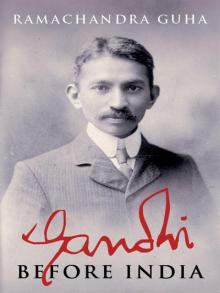 Gandhi Before India
Gandhi Before India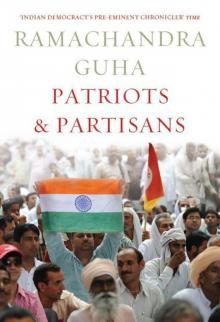 Patriots & Partisans
Patriots & Partisans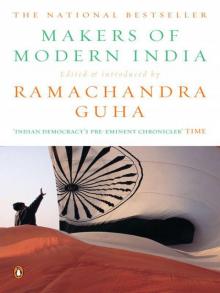 Makers of Modern India
Makers of Modern India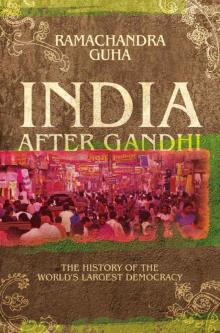 India After Gandhi: The History of the World's Largest Democracy
India After Gandhi: The History of the World's Largest Democracy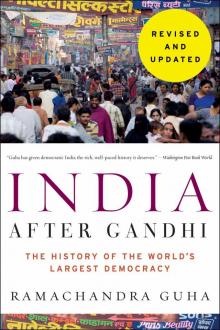 India After Gandhi Revised and Updated Edition
India After Gandhi Revised and Updated Edition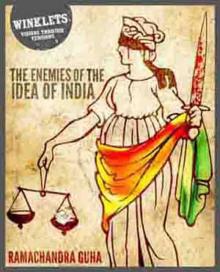 The Enemies of the Idea of India
The Enemies of the Idea of India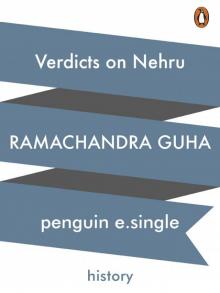 Verdicts on Nehru
Verdicts on Nehru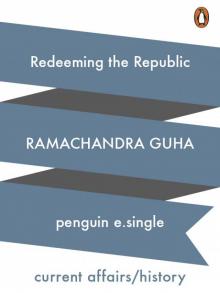 Redeeming the Republic
Redeeming the Republic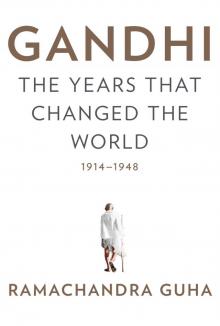 Gandhi
Gandhi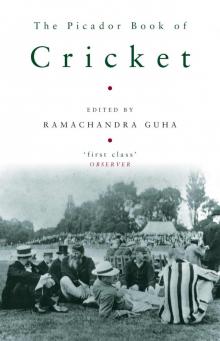 The Picador Book of Cricket
The Picador Book of Cricket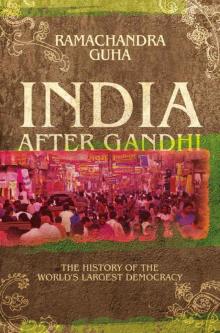 India After Gandhi
India After Gandhi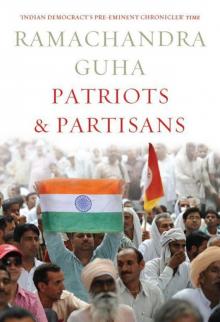 Patriots and Partisans: From Nehru to Hindutva and Beyond
Patriots and Partisans: From Nehru to Hindutva and Beyond